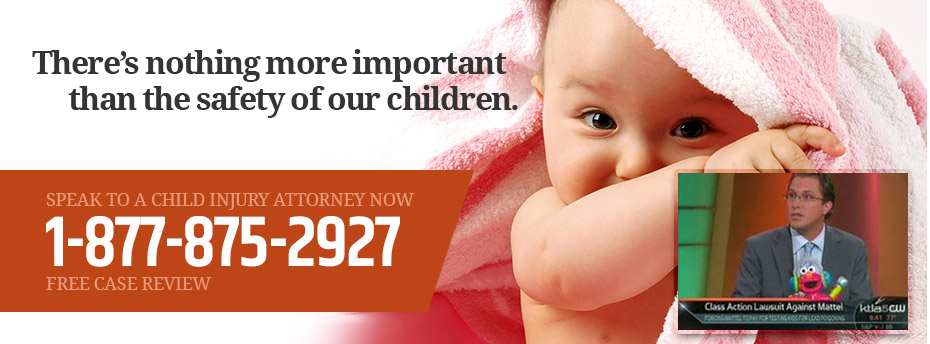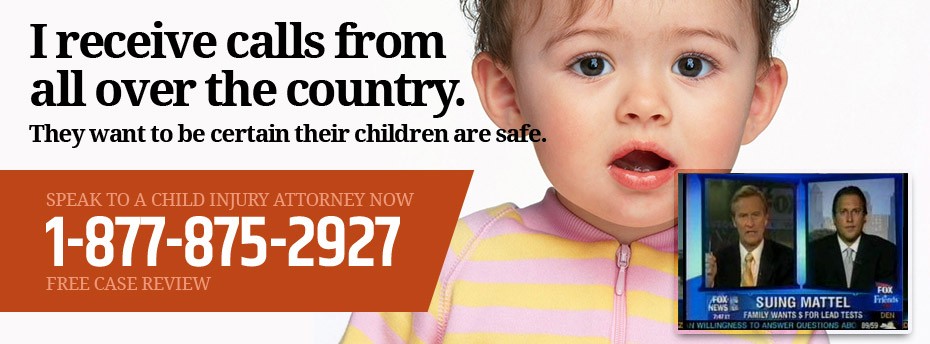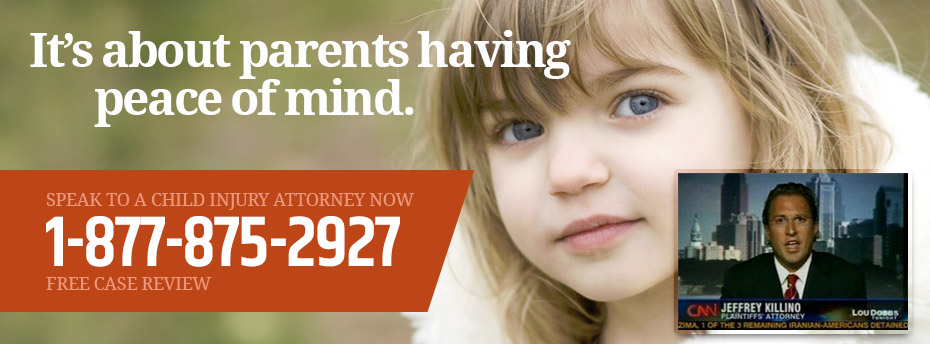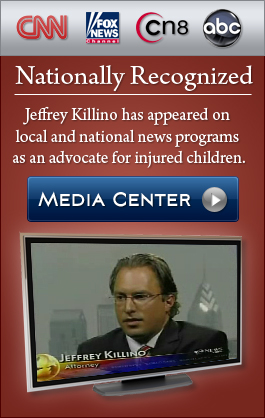Whether they’re in a classroom, biking or crossing the street at a school intersection with or without a crossing guard, attending a field trip, in the gym, or on a playing field or playground, young children and teenagers should always be safe in school. But the reality is, thousands of students are hurt each academic year.
Many in-school injuries amount to little more than cuts, bumps, and bruises. But a significant number of kids suffer catastrophic injuries – head trauma, broken bones, eye injuries causing blindness, and even amputation or paralysis – that will adversely impact their health and well-being for the rest of their lives. Unfortunately, there have been reports of students who have severed their fingers in woodshop or woodworking class; vocational students who have suffered brain and eye injuries in auto shop class; or competitive cheerleaders and football players who have been paralyzed while engaged in school activities.
An experienced School Injury Lawyer, Jeffrey Killino have extensive experience representing injured students, earning national recognition for their aggressive pursuit of justice for victims and their families. If your son or daughter suffered a catastrophic injury at school, please call our law firm toll-free at 877-875-2927 to speak with an attorney and learn more about your legal rights.
Gym Class and Playground Injuries Send 60,000+ Kids to the ER Annually
In the United States, injuries sustained in gym class send more than 40,000 schoolchildren to the emergency room every year. Around 200,000 others require emergency medical care after being hurt on the school playground.
Recent research suggests that students are more likely to get hurt while in the gym or on the playground than anywhere else on the school premises. While many gym and playground injures aren’t very serious, those treated in emergency rooms can have catastrophic consequences, including:
- Dehydration, heat exhaustion, and heatstroke.
- Concussions, which are often far more severe than they first appear.
- Traumatic brain injury, spinal cord injury.
- Broken bones.
- Strangulation injuries caused by swings or jump ropes.
- Fall injuries associated with monkey bars, climbing equipment, swings, and other gym equipment.
Physical education teachers have a duty to look out for the health and safety of the children in their care. An attentive and conscientious gym teacher will:
- Plan activities appropriate for students’ age and abilities.
- Allocate suitable space for the chosen activity.
- Inspect all areas for hazards before an activity begins.
- Select and inspect equipment that is appropriate for each activity.
- Assess the grounds and class areas before each activity.
- Monitor indoor and outdoor gym areas for safety and security
- Be trained in CPR or have access to an AED.
Schools may be negligent If a gym teacher, playground attendant, or maintenance worker failed take appropriate precautions to ensure students are safe.
Sports Injuries at School
High school athletes alone account for roughly 2 million injuries, 500,000 doctor visits, and 30,000 hospitalizations every year in the United States. In fact, of all sports-related injuries treated in hospitals, children aged 5 to 14 make up nearly 40%. Between 2008 and 2015, sport-related injuries killed more than 300 kids across the nation.
More than 20% of all traumatic brain injuries reported among the nation’s children are sports-related. Other catastrophic injuries associated with school sports include:
- Concussions and other head trauma
- Broken bones
- Spine fractures and spinal cord injuries.
- Dehydration, heat exhaustion, and heatstroke.
- Cardiac arrest and heart-related illness.
High-impact sports – football, soccer, baseball and softball, ice hockey, lacrosse, rugby and basketball – are more likely to result in catastrophic injury compared to swimming and other low-impact sports.
According to the American Orthopaedic Society for Sports Medicine, more than 50% of all catastrophic injuries among high school female athletes result from a cheerleading accident.
Playing sports is not without its risks, and these risks are generally considered a normal part of competitive school sports. However, in some instances, school districts, coaches, and other school personnel are legally negligent because they failed to provide adequate supervision or take reasonable precautions to prevent sport-related injuries.
School Science Experiments Gone Wrong
Science lab experiments are both educational and a lot of fun. But every year, hundreds of students around the country are hurt during chemistry laboratory and biology class because a school science experiment went wrong. By one estimate, up to 10% of the safety-related incidents reported at schools every year occur in science classrooms.
Hazard and injuries most frequently encountered in school science labs include:
- Fire: To prevent sudden flares, teachers should train students to inspect Bunsen burners for leaks before use. The class should also review and practice procedures for fire prevention before working with a burner or any other hot surface. All flammable materials should be properly sealed and stored.
- Heat Burns: Before students handle any hot items, they should know how to properly use tongs, water baths, and other cooling equipment to prevent heat burns. Instructors should repeatedly stress the importance of not touching hot surfaces with bare hands.
- Chemical Burns: Students must always wear protective gloves when handling chemicals. They should also be instructed to measure carefully, use only approved containers, and treat all chemicals – especially those that are potentially irritating – with the utmost caution and respect. Many fires or explosions in lab class have been caused by a science demonstration gone awry so students should always be provided with protective gear and the class should have a fire extinguisher.
- Contamination: Students leaving the lab with bacteria, chemicals, or other potentially harmful substances on their skin or clothes are a danger to themselves and others. To prevent contamination, they should thoroughly wash their hands before and after handling any foreign substance. Their clothes and skin should be protected with gloves, glasses, and aprons as needed.
- Cuts and Lacerations: Students should be taught how to safely use dissection tools and how to correctly wrap broken glass, needles, razor blades, and other sharp objects before disposing of them in the trash.
- Inhalation Injuries: To protect children from potentially harmful gases, all classroom labs must be adequately ventilated. Students should receive instruction on the proper procedure for opening windows, operating ventilation fans, and using equipment to measure the level of vapors in the classroom.
- Breaks and Spills: A shattered test tube or beaker can cause chemicals to spill, exposing children to a risk of inhalation injuries and chemical burns. Beakers can also explode, resulting in cuts, lacerations, and eye injuries from broken glass. Students should understand these potential dangers and receive instruction on the correct clean-up procedures should a break or spill occur.
Like other school-related accidents, mishaps in the lab may occur even when all possible precautions have been taken. However, if a student suffers a catastrophic lab injury because of inadequate instruction, unsafe equipment, and poor supervision, the school may be negligent.
School Field Trip Injuries
Whether they’re going to a museum or an amusement park, just about every kid loves a school field trip. But without proper planning and adequate supervision, these excursions can quickly turn disastrous.
There are many ways children can suffer catastrophic injuries on a field trip:
- School bus accidents caused by a reckless bus driver or negligent motorist.
- Failure to supervise children on the part of teachers or other staff.
- Slip-and-falls and other injuries caused by dangerous conditions at the site or venue.
- Lack of safety equipment or warning signs on the premises.
- Injuries from assaults by other students or others attending the event.
To ensure kids are safe, all field trips must be school-sanctioned, and educators should plan carefully to ensure activities are appropriate for their age. Parents should be provided with a permission slip to sign, as well as detailed information about the destination, supervision, transportation, time of departure, return, how their child should dress, and what they should bring. Those organizing the field trip should also ensure there are enough chaperones for adequate supervision, taking into consideration both the size of the group, ages of the students, and the destination.
Teachers should also speak with the parents of any child with a history of bullying, aggression, or misbehavior. Depending on the outcome of the discussion, organizers might decide to make alternative plans for that student or assign them extra supervision.
Finally, organizers should speak with the school nurse about any students with allergies, medical conditions, or other health issues of concern. Parents should provide inhalers, Epi-Pens, and other medications their child might need, https://virtudent.com/pharmacy/. At least one adult on the trip should have parental permission to administer required medications and know how to do so.
Drowning and Pool-Related Injuries
According to the Centers for Disease Control, drowning is the second leading cause of death among kids under 14 in the United States. After toddlers, teenagers (ages 15 to 19) have the second-highest rate of fatal drowning of any age group.
For every child who dies from drowning, another eight receive emergency department care for non-fatal drowning injuries. These injuries can cause brain damage and other serious outcomes, including long-term disability.
Child drownings can happen anywhere, including school swimming pools, and often result from fatigue and the inability to stay afloat. Young grade school students are at the greatest risk of drowning because they lack ample swimming experience. However, pre-teens and teenagers frequently get into trouble because they over-estimate their swimming abilities.
Because school pools rarely have lifeguards, students should only be permitted to use swim areas when an appropriately certified adult or swim coach is present. Doors accessing these areas should always be locked when the pool is not being used for swimming classes or swim team practice.
To prevent unsuspecting students from falling into the water or falling on hard surfaces, the flooring around the pool should be made from a non-slip material, and signs should be posted to warn against running and horseplay. Signs noting varying water depths should also be posted to prevent inexperienced swimmers from venturing into the deep end and prevent students from diving into shallow areas of the pool.
Broken stairs, broken ladders, and defective equipment can also lead to drownings and other catastrophic or fatal injuries. These items should always be in good repair and replaced as needed.
School Crosswalk Fatalities
School zone and crosswalk accidents injure approximately 100,000 students every year and kill around 100 others. Over 80% of these incidents involve a passenger vehicle, and just 4% are school bus-related.
Several factors can contribute to a school crosswalk accident:
- Student Distractions: Every parent knows that kids are easily distracted. Unfortunately, the availability of portable technology has only increased the distractions students encounter on their way to school. In fact, out of 39,000 middle and high school students included in a recent study, 80% wore headphones, looked down at their phoned, or engaged in other unsafe behavior while crossing the street.
- Careless Drivers: The same report noted that about 1/3 of drivers routinely engage in unsafe pick-up or drop-off behavior, including double parking and stopping in the middle of a crosswalk. To make matters even worse, one in ten drivers were distracted by smartphones and other mobile devices while arriving or departing from school.
- Inexperienced Drivers: Teens with brand new drivers’ licenses are a familiar presence near crosswalks and school zones located around high schools. Research suggests that about 55% of school-aged deathsin the United States occur when a teenager is driving.
- Speed Limit Changes in School Zones: Reduced speeds are only in effect in school zones during certain hours. Drivers unfamiliar with the area or distracted may fail to notice the reduced limit and speed through the school zone, putting students at risk.
- Lack of Sidewalks and Inadequate Traffic Control Devices: According to the SafeKids report, roughly half of all high school crosswalks lack a traffic light, pedestrian signal, or other traffic control device, even though they have been found to decrease pedestrian accidents by 15%. Kids in rural areas often have to walk to school or to the school bus along roads that lack sidewalks.
Careless drivers are usually liable or school zone and crosswalk injuries. However, the school might be considered negligent if crosswalks and school zones weren’t clearly marked and lacked adequate traffic signals.
My Student Suffered a Catastrophic Injury. Can I Sue the School?
All schools, whether public or schools — have a legal duty of care to protect their students from undue harm. That duty begins the minute the student steps on the school bus in the morning and throughout the school day, including during gym and science class, on field trips, and while participating in school sports.
However, that duty is not absolute. Courts have generally held that schools are shielded from liability when they’ve taken every reasonable precaution to protect kids from harm. As such, it’s only possible to file a student injury lawsuit when a school has been found negligent for breaching its duty of care. Conditions that may constitute negligence include, but are not limited to, dangerous or defective playground equipment, slippery floors, unsanitary conditions, and the presence of lead or other toxic materials. There are some specific times you can’t sue a school for negligence. For instance, schools are generally not liable for injuries that occur on school property outside regular school hours or apart from school-sponsored events. So, if your son or daughter was hurt by another child while using the school playground on a Saturday morning, the school won’t be held responsible since it had no legal obligation to supervise students at that time.
Additionally, schools aren’t always liable for injuries sustained in an organized school sport. For example, if your child breaks their ankle while playing football, the school can’t be held responsible because student-athletes assume the normal risks associated with their sport. However, if coaches push athletes to overexertion and deny them adequate water during practice on a hot day, the school could be liable for any heat-related injuries students suffer as a result.
Contact an Experienced School Injury Lawyer
As an experienced Child Injury Lawyer, Jeffrey Killino has successfully handled a wide range of personal injury and wrongful death cases involving catastrophic school injuries and school-related accidents. If your son or daughter was seriously hurt or tragically killed while attending school or participating in school-sponsored activities, Jeffrey Killino and his legal staff will commit the resources necessary to ensure your family obtains the compensation and justice you deserve. Please don’t hesitate to contact us today at 1-877-875-2927.





